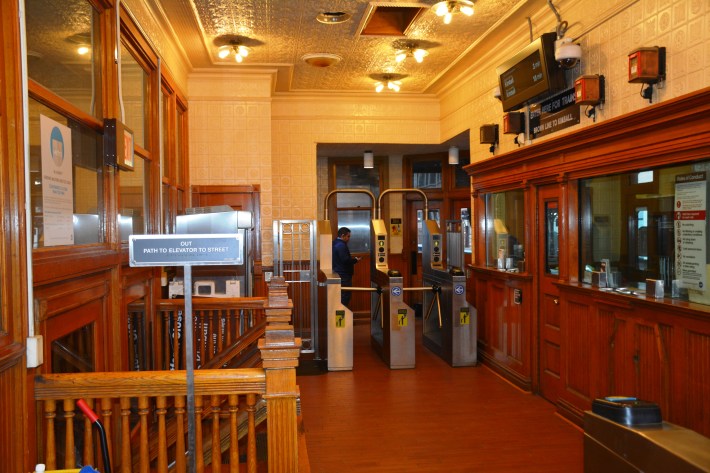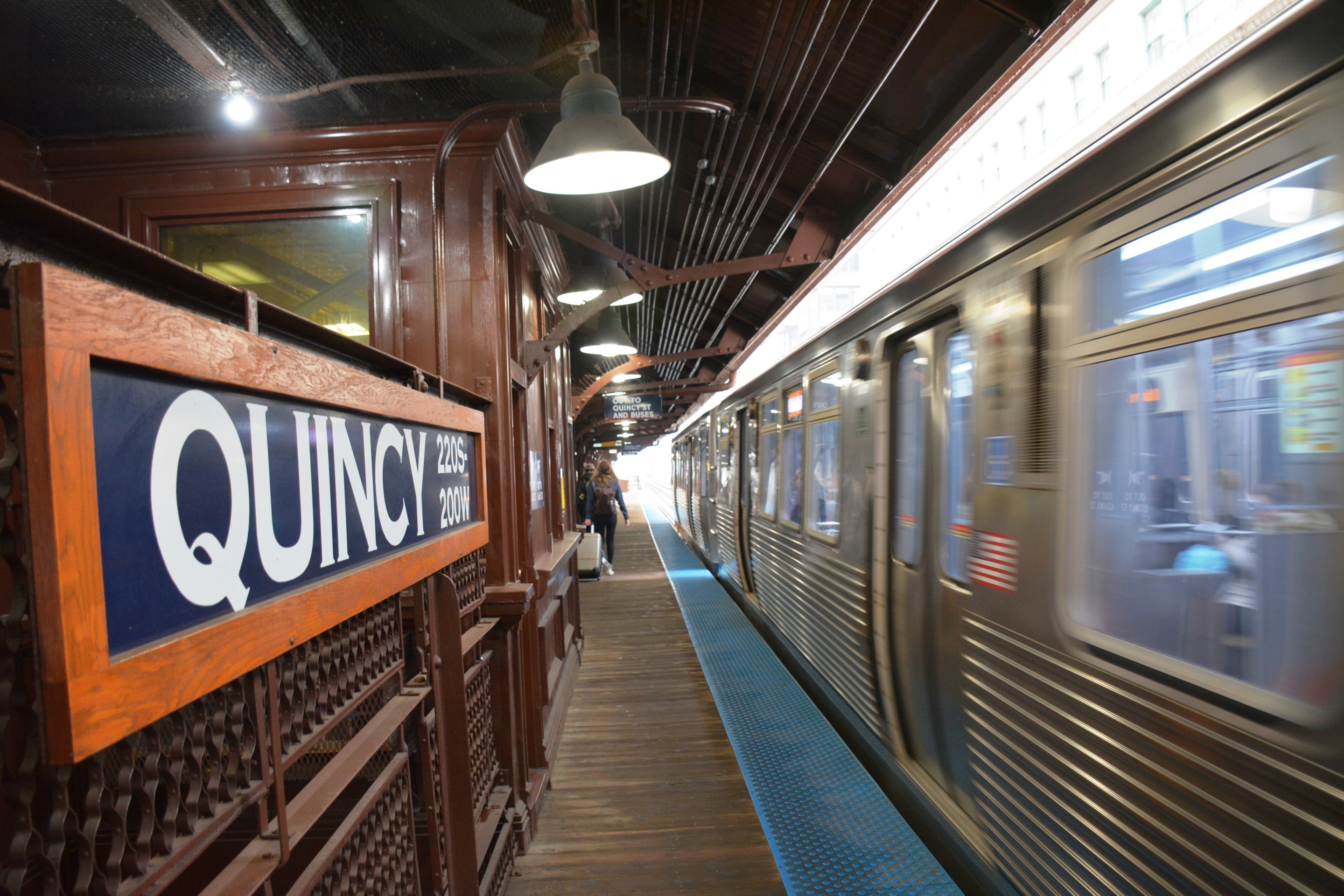Last week the city of Chicago celebrated renovation of the historic Quincy Loop 'L' station, which modernized the station to make it wheelchair accessible, while maintaining its old-timey flair. It's part of the city's project to make the entire CTA system accessible to people with disabilities over the next two decades. (Many have argued that's too slow a timetable -- 42 of Chicago's 145 'L' stations are still inaccessible to wheelchair users.)
The Quincy stop sees over 2.2 million trips a year on the Brown, Orange, Pink and Purple lines, and is a transfer point for 11 CTA bus routes. It also provides connections to Union Station and the LaSalle Street Metra stop.
“The Quincy 'L' station has served riders for more than 120 years, providing customers with convenient access to and from Chicago’s downtown Loop, business district and tourist destinations,” Mayor Rahm Emanuel said in a statement. “The addition of these two new elevators extends the life of this historic station and makes it fully functional and accessible for all 21st century customers.”

The $18.2 million bankrolled by local tax increment finance funds, added two elevators either side of Wells Street on the south end of each platform. The elevators bring customers up to the stationhouse for both the Inner Loop (Orange, Purple, and Pink lines) and Outer Loop (Brown Line) platforms. The elevator towers were designed to complement the station's historic railings.
Quincy Station also received lighting upgrades, reconfigured stairs to improve passenger circulation, new tile flooring, high-definition security cameras, and motorized doors that meet ADA guidelines.

The Quincy station was originally built in 1897, just a few years after the Chicago's 1893 World's Fair. Many of the original features are still in place, including pressed metal wreaths and fluted pilasters (rectangular columns), located on the stationhouse façade - as well as the ticket agent booth, which is still in use. The station was landmarked last year. The last renovation of the station was in 1988, when the stop was restored to its original 1897 glory.





